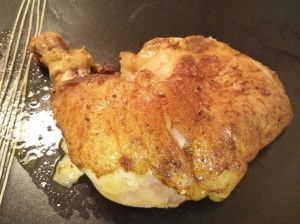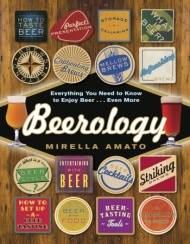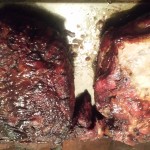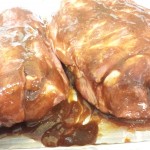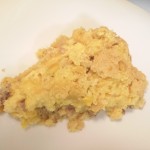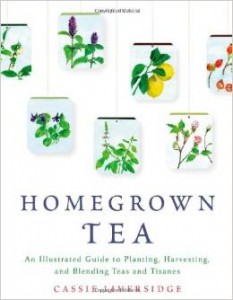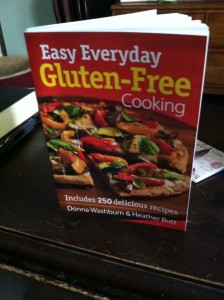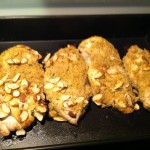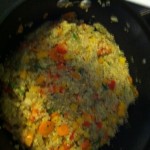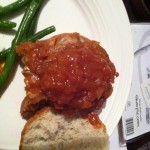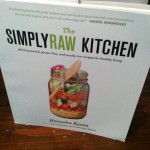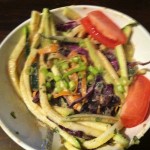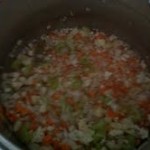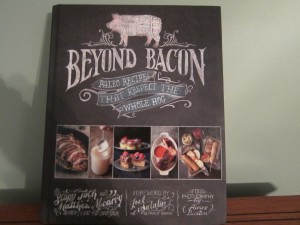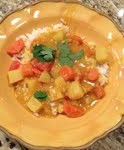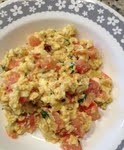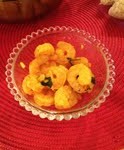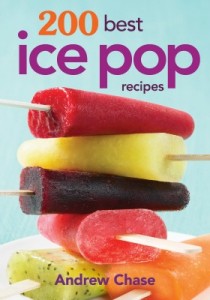It has taken me way too long to write this review, and the reason is actually pretty simple: I didn’t want to. I read the book, and cookprepared many of the dishes within it months ago (and again since), and the whole time, I just keep thinking about how my parents always told me that ‘if you can’t say something nice’ … what the hell can I say about this?

“Raw Quick & Delicious” is a pretty book, and I learned a few things and got some good ideas.
However, it advertises “5-ingredient recipes in just 15 minutes” (it’s right there on the cover), but you don’t get the (major) caveat until you start reading – you learn that many of these “5-ingredient” recipes actually contain one or more ingredients (e.g., nut milk, cashew “cheese”), which you are expected to have prepared ahead of time. Some of which take a lot of time. Further, many also require rather specialized equipment, like a juicer or high-powered blender. So, on just the book’s cover we discover two fairly glowing misrepresentations.
Then we look inside. On page 10 (really only the third page of actual content), we come to a paragraph about enzymes, and how cooking food breaks these down and makes it less nutritious. This statement is bunk. For starters, there is little to no (actual scientific) evidence that any food enzymes even get past the stomach in the first place,* and I can find none whatsoever that they have any impact on the nutritional value of food. In fact, there actually is evidence that cooking food was a key inflection point in human evolution by allowing us to get *more* nutrition out of food to develop our big brains.**
So, let’s move past the pseudoscience, even though it does in fact pervade the entire book, and get to the meat … err … vegetables. I love vegetables, and as all our readers know, I do a lot of vegan cooking; even after all that, I was looking forward to learning some new recipes (and techniques) for making delicious dishes.
I don’t own a high-powered food processor, and haven’t got the time or inclination to do my own sprouting or making nut cheese (real, cheese-cheese, is available and bloody delicious), so I started simple: the Fresh Herb Toss (page 105). As directed, I tossed the herbs (cilantro, basil, parsley) with olive oil and lemon juice, plus salt, and served. It was tasty and refreshing, but a bit bland. I added some cayenne pepper and diced cucumber (see? still raw!), which I found greatly improved the dish.
I also made (and enjoyed) the Spicy Pear and Cabbage Salad (page 119). I served it with a steak, and was quite pleased (and this is one that really only takes a few minutes to make!). Ditto with some of the other slaws on the following pages, though I did consistently find the recipes (as written) lacked a certain depth, and often added things like cayenne or red onion to fill that gap. The Sweet and Sour Kale (page 179) was a particular offender here, but much improved with the addition of (raw) garlic and onion.
Now we get to the section on “Pasta and Noodles,” which of course contains neither.*** The most memorable of these, for me, was the Celery Root Ravioli (p. 147). This is a lot of work, even with a good mandoline, and took me more than 15 minutes. In the end, the filling is a bit bland but has a nice texture, and the ‘ravioli’ really don’t hold together very well. After a few attempts, I tossed it all in the blender and used it to fill real (pasta) ravioli, which I boiled and sautéed in butter, and which were actually really good.
Before closing, I must note that 40 pages (21% of the 189 recipe pages) of this book contain recipes for smoothies and juices, which, while possibly delicious, do not meet my criteria for meals. I am not an infant, I like to chew my food. Then there’s the further 15 pages of dressings, and various recipes for nut milk, jam, etc. I may make some of these to use as garnishes or put them on salad, but that’s a lot of real estate for garnishes.
All told, “Raw Quick & Delicious” contains some very nice starter recipes, but the dishes are generally a bit bland, and require way more work than advertised. I learned a few things, got a ton of practice on my mandoline skills, and have some good ideas to apply elsewhere (the ravioli, above). If you’re committed to the raw diet thing, there are plenty of things here that, with a (sometimes large) bit of tweaking, are quite good. Demerits, however, must be given for all the maddening pseudoscience peppered throughout (while pepper was often missing as an ingredient, see what I did there?), and the complexity in a ‘simple’ cover, so I have to give this book a C. I’ll stick to cooking (and real cheese!).
– MAW
* Remember all that acid digestion stuff? Yeah, acid denatures the hell out of proteins – which reminds me of the following statement in the same paragraph: “Our bodies produce enzymes too – substances, usually proteins, that help digest food.” Are you kidding me?! *All* enzymes are proteins. All of them (OK, there’s some very recent evidence that a few amine macromolecules might act as enzymes and are (very) technically not proteins). *Some* of them help digest food. Others do things like facilitate metabolism, facilitate DNA transcription, etc. Anyways, this sort of pseudoscience presented as fact just makes me furious****.
** Which we now use to create reality television and fad diets, but oh well.
*** An aside to fad diet developers: if your food stands on its own, you don’t need to try so hard to force it in to another mold: vegetables are delicious on their own, and they do not need to pretend to be burgers, pasta, or meatballs. They never will be, and the simulacrum will always be disappointing.
**** Almost as furious as the improper use of “that” in the quoted sentence.
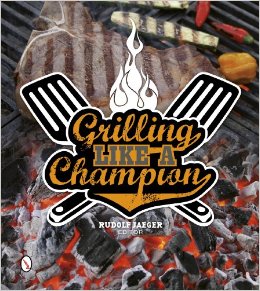 The book also contains over 100 delicious, international recipes, many that you might have made before with alternative cooking methods (in the oven or on the stove top), but have been adapted for cooking outdoors (including oven, rotisserie, dutch oven, wood-fired oven, charcoal/gas grills, smoker, and wok). Part of the charm of this book is that it pushes the limits of what you ever imagined cooking on your grill (or via other outdoor cooking methods). The book contains recipes for appetizers, main courses, sides, and desserts. Dishes that you’ve only ever made on the stove-top or in your oven are now presented to you in grill-able form. If you do not own a wood stove, or a smoker, you can easily use the recipes in an indoor oven or a grill with a smoker box. I tested the Bollywood Beer Can Chicken recipe. This was a solid recipe, utilizing flavorful curry, coconut milk, spices, and beer (I used an IPA for mine). The end result was a delicious, moist, tender, flavorful chicken (pictured below). I was very pleased by how delicious the chicken turned out. I am looking forward to trying more of the recipes in the book.
The book also contains over 100 delicious, international recipes, many that you might have made before with alternative cooking methods (in the oven or on the stove top), but have been adapted for cooking outdoors (including oven, rotisserie, dutch oven, wood-fired oven, charcoal/gas grills, smoker, and wok). Part of the charm of this book is that it pushes the limits of what you ever imagined cooking on your grill (or via other outdoor cooking methods). The book contains recipes for appetizers, main courses, sides, and desserts. Dishes that you’ve only ever made on the stove-top or in your oven are now presented to you in grill-able form. If you do not own a wood stove, or a smoker, you can easily use the recipes in an indoor oven or a grill with a smoker box. I tested the Bollywood Beer Can Chicken recipe. This was a solid recipe, utilizing flavorful curry, coconut milk, spices, and beer (I used an IPA for mine). The end result was a delicious, moist, tender, flavorful chicken (pictured below). I was very pleased by how delicious the chicken turned out. I am looking forward to trying more of the recipes in the book.
